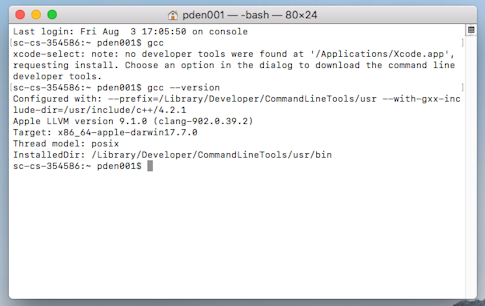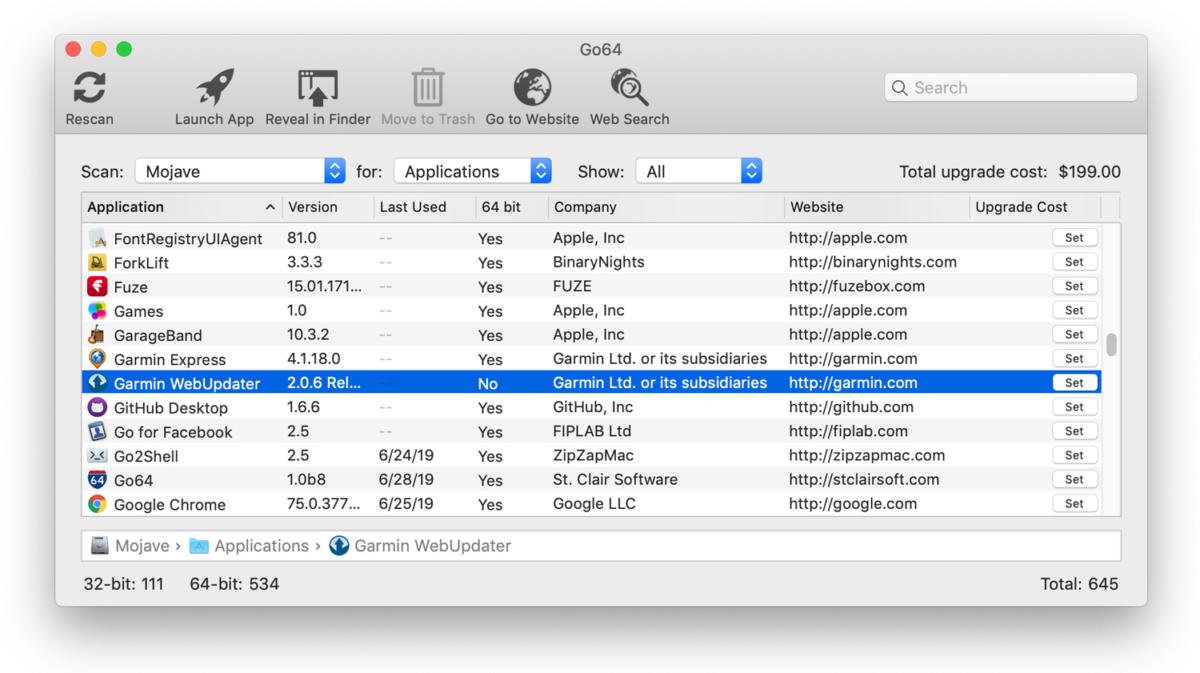
- How to find installed programs on mac how to#
- How to find installed programs on mac mac os x#
- How to find installed programs on mac update#
- How to find installed programs on mac upgrade#
- How to find installed programs on mac software#
How to find installed programs on mac mac os x#
"How to Uninstall & Remove Mac OS X Programs and Applications," The Mac Observer. "Uninstalling Applications in Mac OS X,". "Tutorial: Now you see 'em, now you don't: Invisible files in Mac OS X,", May 19, 2004. But clearing away computer clutter and making space on your hard disk can be just as satisfying.
How to find installed programs on mac software#
Removing software from your Mac is a lot less of a hassle than cleaning your office or garage.
How to find installed programs on mac how to#

They will usually be labeled with the name of the program, like Office or Acrobat, or the developer, such as Microsoft or Adobe. These files are likely to reside in Library folders in your hard drive or Home folder. Background files or support files can be larger, especially for multimedia programs like GarageBand. Preference files are usually small and you might want to ignore them if you're just trying to free up disk space. You should be aware that removing an unbundled program by moving it into the Trash can leave behind orphan files on your computer. Running an uninstall utility can make removing a program much easier. If you downloaded a disk image to install the software, sometimes you'll find an uninstaller there. If your program has an uninstall utility associated with it, it may have been installed with the program or included on the disk that came with it. The first step in removing them is to check the program's documentation to see if there is an uninstall utility. When installed, these programs create files in several locations, often in the System Folder.

įor some other programs, removal is more complicated. You should see an option that says, "show package contents." Uninstalling applications downloaded from the Mac App Store is even easier - just delete the application from the Applications Folder and its accompanying folder in User\Library\Containers. In Mac talk, apps like this are "bundled." To see the files in an application's bundle, click on its icon while holding down the Control key.

When files for the application you want to delete are all stored in one location, dragging the icon to the Trash will take care of most of the work. Drag the icon of the program you want to uninstall to the Trash.Open the Applications folder, which you'll find by opening a new window in the Finder (icon with a blue face), or clicking on the hard disk icon.
How to find installed programs on mac update#
If an error occurs while installing an update or upgrade, learn how to resolve installation issues. If you downloaded any apps from the App Store, use the App Store to get updates for those apps. When Software Update says that your Mac is up to date, then macOS and all of the apps it installs are up to date, including Safari, Messages, Mail, Music, Photos, FaceTime, and Calendar. Software Update shows only upgrades that are compatible with your Mac.
How to find installed programs on mac upgrade#
Upgrade Now installs a major new version with a new name, such as macOS Monterey.Update Now installs the latest updates for the currently installed version, such as an update from macOS Big Sur 11.5 to macOS Big Sur 11.6.If your System Preferences doesn't include Software Update, learn how to upgrade to macOS Monterey or upgrade to an older macOS, and use the Updates tab of the App Store app to get app updates. In the System Preferences window, click Software Update. As hinted in the introduction to this article, another method of finding what Homebrew packages are installed on a Mac by simply using the ls command to show where Homebrew packages are installed: ls /usr/local/Cellar/ The output of that command will be every package installed through Homebrew, as they always end up in that directory by default.From the Apple menu in the corner of your screen, choose System Preferences.Then follow these steps to find and install any available software updates or upgrades. Before you get started, it's a good idea to back up your Mac.


 0 kommentar(er)
0 kommentar(er)
